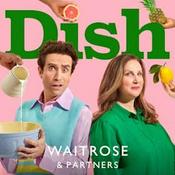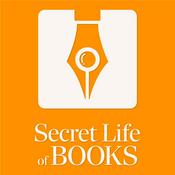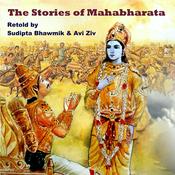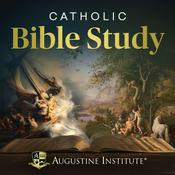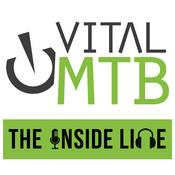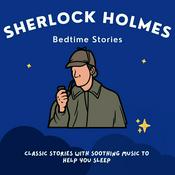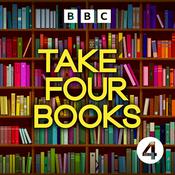37 episodes

The Bank of England: Soane, Baker and the Most Controversial Building of the 20th Century
19/12/2025 | 52 mins.
Send us a text2025 celebrates the rebuilding of the Bank of England by Sir Herbert Baker – if celebrate is the right word. It remains one of the most controversial projects in 20th century architecture. Baker’s name has been irredeemably blackened for his presumption in destroying the Bank of England created by Sir John Soane a century before. Clive and John revive the debate, describing the history of this great symbol of British finance and might, asking whether Baker has had a fair press. While Soane’s vanished interiors were a masterpiece, the financial operations of the British state had hugely expanded during the First World War. Baker admired Soane but what was he to do? The options were not favourable to conservation. Baker was himself a Classicist and saw himself as speaking the same language as Soane. Moreover, although a man of Empire, he was also – paradoxically perhaps – deeply committed to the Arts and Crafts Movement. His Bank of England became one of the greatest commissions for sculpture and the decorative arts of its time. Baker’s reputation was blackened by his erstwhile friend Lutyens, with whom he fell over over New Delhi. Is now the time to redeem it?

Chim-Chiminee: The History of the Chimney
11/12/2025 | 1h 2 mins.
Send us a textThis is the time of year when thoughts turn to mince pies, Christmas shopping, mulled wine – and chimneys, whether it is to settle around a roaring hearth or hope that Father Christmas pays a visit. So John and Clive are turning their attention to the development of this architectural form, beginning with the appearance of walled fireplaces in the Norman period. Chimneys reached a zenith of fantasy under the Tudors, when astounding feats of decoration were achieved by means of the novel building material of brick. The invention of more efficient grates in the Georgian period led to another kind of design challenge, while the Victorians capped the countless chimneys which spread coal smoke over cities such as London with a myriad of pots and cowls. Which type of chimney is Santa’s favourite? As this episode of ypompod reveals, he is spoilt for choice.

Vanbrugh at 300: Celebrating The Life and Times of Sir John Vanbrugh (With Charles Saumarez Smith)
04/12/2025 | 1h 1 mins.
Send us a textIn today's episode of Your Places or Mine, John is joined by the inimitable Charles Saumarez Smith who divulges all he knows about the architect Sir John Vanbrugh in anticipation of the 300th anniversary of his death. Discover the remarkable life and legacy of Sir John Vanbrugh — playwright, architect, and one of the most unconventional figures of the English Baroque. From his daring comedies to his groundbreaking designs like Blenheim Palace and Castle Howard, John and Charles explore how Vanbrugh’s bold imagination reshaped both the stage and the skyline. Join us as we uncover the wit, ambition, and controversies behind a man who refused to live—or build—by the rules.

Journalists and Gentlemen: How the Georgian Group Saved London
28/11/2025 | 1h 14 mins.
Send us a textThe founding of the Georgian Group in 1937 was a milestone in the movement to save beautiful architecture. With an anniversary around the corner, Clive and John discuss how the Group emerged from the parent organisation, the Society for the Protection of Ancient Buildings, and why it was needed. They reveal the extraordinary extent to the destruction inflicted on Georgian London after the First World War. Not even town palaces, Georgian square or the works of the Adam Brothers, notably the Adelphi, were spared.Whereas SPAB’s interests were principally medieval and rural, the Georgian Group’s were metropolitan and post-1714. It required a heroic effort to get it going. The idea originated with the much put upon journalist Douglas Goldring, before catching the imagination of various grandees, including Lord Derwent; Robert Byron served as a brilliant propagandist. Clive shares some of his own experience as the Founding Hon.Secretary of the Twentieth Century Society (the called the Thirties Society) to illuminate some of the issues. The Georgian Group was a media success – but demolition on a scale previously unimagined came, courtesy of the Luftwaffe, during the Blitz. With new challenges after the Second World War.

The Tale of Parliament Part 2 - The House of Lords
20/11/2025 | 1h 2 mins.
Send us a textLast week’s Your Places of Mine celebrated the rebuilding of the House of Commons after the original interior was bombed during one of the last raids of the Blitz. This week, Clive and John consider the Palace of Westminster, otherwise known as the Houses of Parliament, as a whole. After the old Palace had been all but destroyed by fire in 1834, Charles Barry won the competition to rebuild it, producing a building that may have shortened his life but is surely one of the herculean achievements of the Victorian age. With the help of the superb designer of Gothic ornament, AWN Pugin, he produced a building that is both deeply traditional in its style and iconography and intensely modern in the technology that underpinned it. The glorious, theatrical composition of turrets, pinnacles, and rich tracery purposefully evokes the virtues of an idealised medieval past, in the hope of inspiring the legislators of the present day.Only two years before the fire, the Great Reform Act had been passed. Until that point much of the governance of the country had taken place in the splendid homes of the aristocracy, so the state of the Houses of Parliament may not have concerned them unduly. The new building would be equipped with all the amenities that Parliamentarians could find in their London clubs. It was at the same time more sumptuous and more middle class.Innumerable statues and paintings of saints, heroes and kings reminded post-Reform politicians of the standards they were expected to live up to. The Lords chamber was always richer than that of the Commons – a contrast made all the greater when the Commons was toned down after the Second World War. But the greatest richness of all was reserved for the monarch. What does it mean? How was it all done? What does the future hold in store? The subject is almost endless but Clive and John manage to do it justice in just an hour!
More Arts podcasts
Trending Arts podcasts
About Your Places or Mine
Listen to Your Places or Mine, Fresh Air and many other podcasts from around the world with the radio.net app
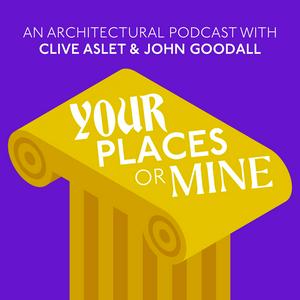
Get the free radio.net app
- Stations and podcasts to bookmark
- Stream via Wi-Fi or Bluetooth
- Supports Carplay & Android Auto
- Many other app features
Get the free radio.net app
- Stations and podcasts to bookmark
- Stream via Wi-Fi or Bluetooth
- Supports Carplay & Android Auto
- Many other app features


Your Places or Mine
download the app,
start listening.


